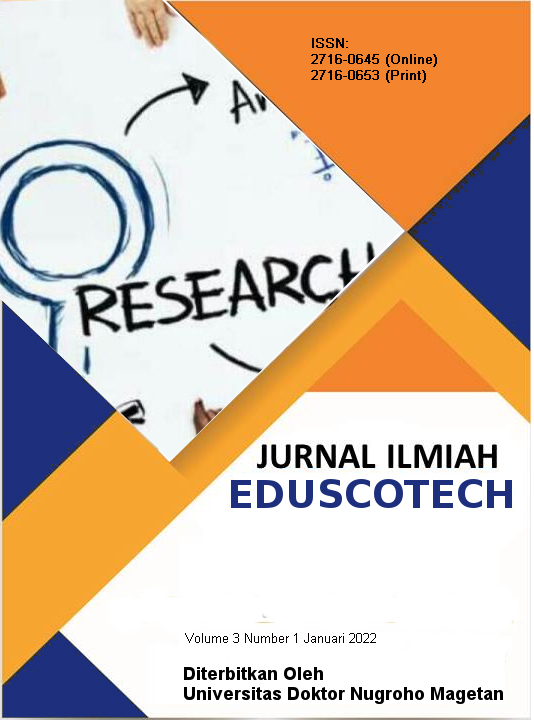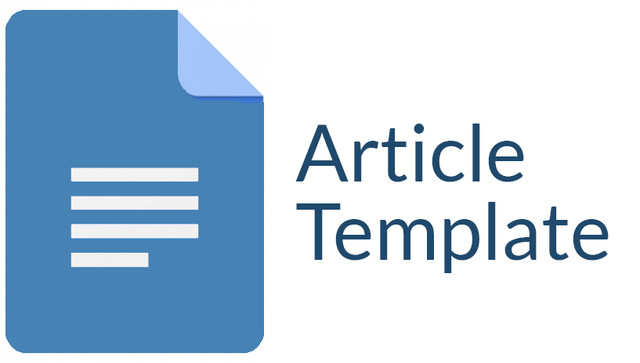Efektivitas Prnggunaan Musik Dan Nyanyian Untuk Meningkatkan Kemampuan Berbicara Pada Anak Usia Dini Tpa Mutiara Bunda Magetan
Keywords:
Speaking Ability, Early Childhood, Music, Singing, TPAAbstract
This study aims to examine the effectiveness of the use of music and singing in improving speech skills in early childhood at TPA Mutiara Bunda Magetan. Speaking skills are a crucial aspect of children's development, and this study examines how music and singing can be innovative solutions to overcome these challenges. This study adopts a qualitative approach with a case study design. The subjects of this study were 16 early childhood children, 2 teachers, and 16 parents/guardians of students at the Mutiara Bunda Magetan Landfill. Data was collected through triangulation techniques, namely participatory observation, in-depth interviews, and documentation. Data analysis is carried out interactively, including data reduction, data presentation, and conclusion drawn. The results showed that the use of music and singing was significantly effective in stimulating early childhood speaking skills. The positive changes observed included improved vocabulary, the ability to compose sentences, and confidence in communication. Based on these findings, this study recommends the application of music and singing as an effective and fun learning strategy to stimulate speech skills in early childhood.
Downloads
References
Amalina, S. (2021). Penerapan Tari Tongkat Bambu sebagai Upaya Meningkatkan Konsentrasi Belajar Siswa. Jurnal Pendidikan Sekolah Dasar, 15(2), 112-120.
Anggito, A., & Setiawan, J. (2018). Metodologi penelitian kualitatif. CV Jejak.
Arikunto, S. (2014). Prosedur penelitian: Suatu pendekatan praktik. Rineka Cipta.
Creswell, J. W., & Poth, C. N. (2018). Qualitative inquiry and research design: Choosing among five approaches (4th ed.). Sage Publications.
Emzir. (2017). Metodologi penelitian kualitatif: Analisis data. Rajawali Pers.
Fathoni, A. (2013). Metodologi penelitian dan teknik penyusunan skripsi. Rineka Cipta.
Gardner, H. (2015). Frames of mind: The theory of multiple intelligences. Basic Books.
Gunawan, I. (2022). Metodologi penelitian kualitatif: Teori dan praktik. Bumi Aksara.
Miles, M. B., Huberman, A. M., & Saldaña, J. (2014). Qualitative data analysis: A methods sourcebook (3rd ed.). Sage Publications.
Moleong, L. J. (2017). Metodologi penelitian kualitatif (Edisi Revisi). PT Remaja Rosdakarya.
Mulyana, D. (2021). Metodologi penelitian kualitatif: Paradigma baru ilmu komunikasi dan ilmu sosial lainnya. PT Remaja Rosdakarya.
Nurhayati, R. (2015). Penerapan teknik bamboo dancing dalam meningkatkan kemampuan motorik kasar. Jurnal Pendidikan Usia Dini, 9(2), 203-214.
Puspitasari, A., & Sari, N. I. (2016). Hubungan antara aktivitas di luar ruangan dengan kecerdasan naturalis pada anak prasekolah. Jurnal Pendidikan, 1(1), 12-25.
Rahardjo, M. (2017). Studi kasus dalam penelitian kualitatif: Konsep dan prosedurnya. Jurnal Ilmu Sosial dan Humaniora, 6(1), 1–13.
Saldaña, J. (2021). The coding manual for qualitative researchers (4th ed.). Sage Publications.
Satori, D., & Komariah, A. (2014). Metodologi penelitian kualitatif. Alfabeta.
Setiyawan, H. (2020). Observasi partisipatif dalam penelitian pendidikan anak usia dini. Jurnal Ilmiah Visi, 15(1), 25-34.
Sugiyono. (2019). Metode penelitian kuantitatif, kualitatif, dan R&D. Alfabeta.
Suharsaputra, U. (2012). Metode penelitian kuantitatif, kualitatif, dan tindakan. Refika Aditama.
Suryana, Y. (2017). Penerapan metode pembelajaran kooperatif untuk meningkatkan interaksi sosial anak usia dini. Jurnal Pendidikan Guru PAUD, 5(1), 78-89.
Yin, R. K. (2018). Case study research and applications: Design and methods (6th ed.). Sage Publications.
Downloads
Published
Issue
Section
License

This work is licensed under a Creative Commons Attribution-ShareAlike 4.0 International License.
Authors who publish with this journal agree to the following terms:
1. Copyright on any article is retained by the author(s).
2. The author grants the journal, right of first publication with the work simultaneously licensed under a Creative Commons Attribution License that allows others to share the work with an acknowledgment of the work’s authorship and initial publication in this journal.
3. Authors are able to enter into separate, additional contractual arrangements for the non-exclusive distribution of the journal’s published version of the work (e.g., post it to an institutional repository or publish it in a book), with an acknowledgment of its initial publication in this journal.
4. Authors are permitted and encouraged to post their work online (e.g., in institutional repositories or on their website) prior to and during the submission process, as it can lead to productive exchanges, as well as earlier and greater citation of published work.
5. The article and any associated published material is distributed under the Creative Commons Attribution-ShareAlike 4.0 International License









